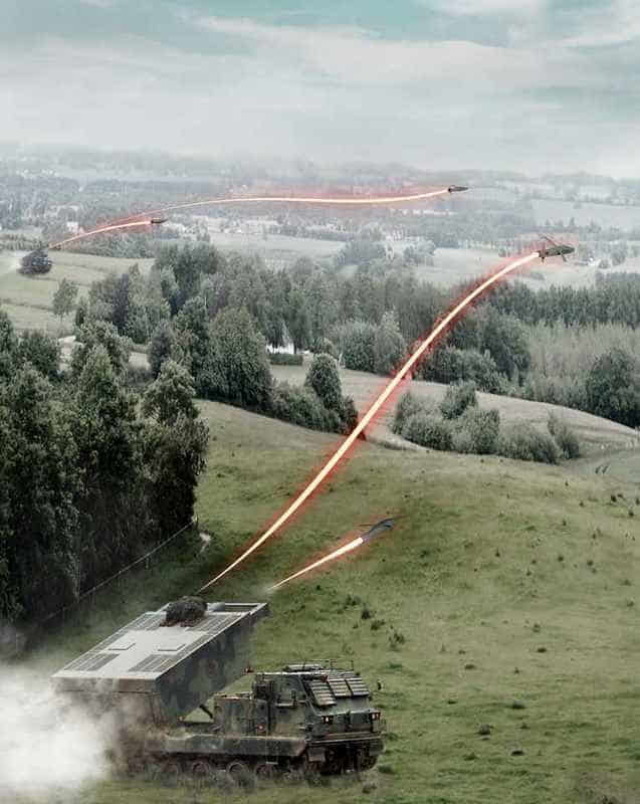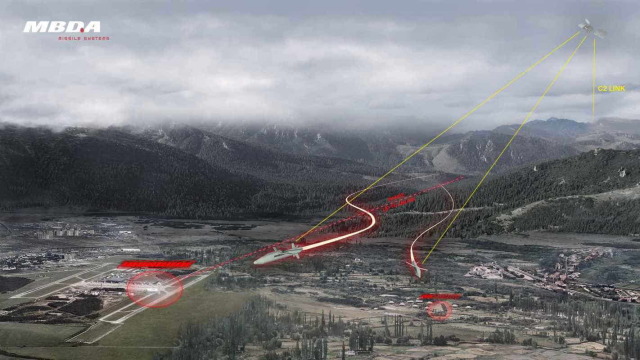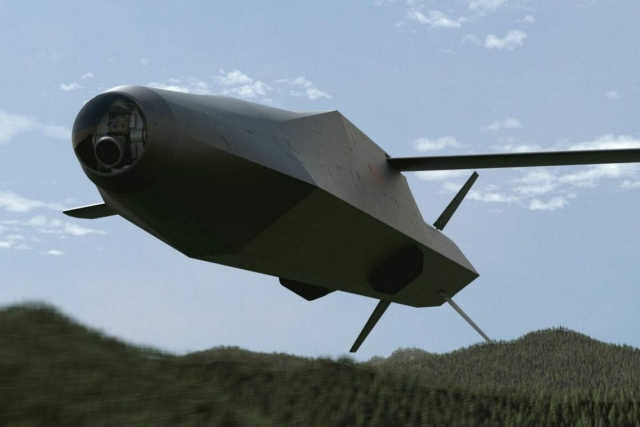During the Eurosatory 2022 international arms exhibition held in Paris in June this year, MBDA Deutschland presented a new concept of a missile system for Joint Fire Support (JFS-M). As reported, the concept offers a solution that can meet the requirements of the German Ground Forces regarding promising long-range artillery systems (300 km +).
Threat analysis
As you know, Western military theory attaches exceptional importance to the combined tactical fire support (OTP) in the formation of combat stability and strike power of modern armed forces. At the same time, in the process of the ongoing reorientation to national and allied defense, NATO countries realized with regret for themselves that the existing OTP capabilities optimized for stabilization operations are significantly inferior to the resources of an equal enemy both in quantity and quality in terms of range and degree of impact on the target.
In particular, the Armed Forces of China and Russia demonstrate the ability to use operational associations of heterogeneous systems and means to protect their troops and territories from the enemy, called zones of prohibited access and maneuver (Anti-Access/Area Denial, A2/AD). Such associations include combat aircraft, long-range air defense systems, divisions of ballistic and cruise missiles, self-propelled and rocket artillery, as well as electronic warfare (EW) systems of various designs and capabilities.
Both countries have developed new artillery and anti-aircraft systems that not only have a significant firing range, but are also relatively cheap. Due to the long range and a large number of systems of various types, high spatial and temporal availability of fire support means is ensured, which has recently become clearly visible during Russia's special military operation in Ukraine. The breakthrough of such a multi-layered and highly developed A2/AD protective shield poses fundamental challenges to the armies of the West, some of which cannot be solved with the help of existing systems.
Means of destruction for a promising system of fire from closed positions
In general, Western sources note that these shortcomings are recognized by the military-political leadership of NATO countries and should be eliminated with the help of conceptual decisions of individual states. To this end, within the framework of the study "Common Indirect Fire System" (Common Indirect Fire System), military experts from Germany and France jointly studied the feasibility of purchasing indirect fire weapons on a multinational basis in the future. They completed their research in 2018, and since then the multinational approach has been suspended, because, as it turned out, various requirements and ideas cannot be fully coordinated and harmonized with each other.

Modernization of existing MLRSBased on the experience gained, the Bundeswehr intends to implement its own solutions that will allow in the medium term to close the gaps in the capabilities of barrel and rocket artillery, as well as mortar complexes.
In this regard, within the framework of the project "A set of means of destruction for a promising system of fire from closed positions" (ZukSysIndirF), responsibility is assigned to the command of the Ground Forces. Within the framework of the Long-range Perspective Indirect Fire System subproject (Zukünftiges System Indirektes Feuer großer Reichweite), on the one hand, it is planned to modernize existing rocket artillery systems and further equip them with new, more powerful weapons of various types.
On the other hand, artillery units of the corps and divisional level should be able to fight the enemy at ranges of more than 150 km. Depending on the source, the maximum range is indicated from 300 to 499 km. At the same time, it is emphasized that the parameter of 499 km is not a technical, but a political limitation, since ground-based weapons with characteristics exceeding 500 km are considered medium-range systems, the spread of which Berlin is trying to limit with the help of arms control regimes.
JFS-M missile for combined fire support
According to the views of the Bundeswehr command, the further increase in the complexity of future military conflicts is considered indisputable. One of the likely scenarios was presented by the experts of the German Army in the thesis "How will the ground forces fight in the future?" In this scenario, the battle bands become wider, deeper and more confusing. While their own forces will have to deal with static and mobile targets in an urban environment and on rough terrain. At the same time, they will be required to pay great attention to the prevention of collateral damage. In addition, before the systems used can affect the enemy (pointwise and dosed), they will have to overcome several echelons of its defense, consisting of a variety of air defense and electronic warfare systems.

The scenarios of combat use are becoming wider, deeper and more confusingIt is for this scenario that MBDA Deutschland GmbH (Schrobenhausen, Bavaria) is developing a missile for Joint Fire Support (JFS-M).
At the same time, it is expected that being a qualitatively new means of destruction, the JFS-M will be able not only to increase the effectiveness of German artillery, but also to open up additional operational capabilities for troops.
Guided or ballistic missile
According to available data, a "promising long-range fire system from closed positions" should meet a whole set of requirements. First of all, to be able to work beyond 300 km and on several categories of targets (mobile and stationary, point and area, in open terrain and in urban areas), including those under the protection of anti-aircraft systems or electronic warfare systems. In addition, the possibility of changing the initial mission of the munition or its interruption must be guaranteed.
MBDA engineers are convinced that these requirements are better and easier to implement with a guided missile (SD) than it would be possible with a missile moving along a ballistic trajectory. UR offers several advantages:
- The ability to program the exact route of approach to the target, which allows you to fly around potentially dangerous points and zones. Compared to ballistic missiles (BR) and BR guided at the end of the trajectory, this requires significantly less interference in airspace management and coordination on the future battlefield.
- UR can perform low-level and contour flight, which complicates the opposition from the enemy's air defense.
- In comparison with the BR, the minimum firing range of the maneuverable UR is significantly less. If necessary, the JFS-M should allow you to change the direction of flight after launch and hit targets in the immediate vicinity of the firing position. According to publications, the potential firing range of the JFS-M is determined by MBDA in the range from 1 to 499 km, while the BR, in order to be effective, can have a minimum firing range of at least 10-15 km.
- Guided missiles are capable of accurately hitting moving targets.
To minimize risks and costs during development, MBDA specialists rely on the synergy effect. For this purpose, in the course of further design, it is planned to use proven technologies that have already been successfully developed and used in other products of the company. In addition, it is planned to ensure the widest possible technological proximity to other promising systems of unmanned and compatible aircraft being developed. It is believed that in addition to the synergistic effect in production, this will also give additional operational advantages. For example, according to MBDA experts, artillery will be able to use the JFS-M to support the Air Force in an air war.
To be continued…According to the materials of the resource soldat-und-technik.de

